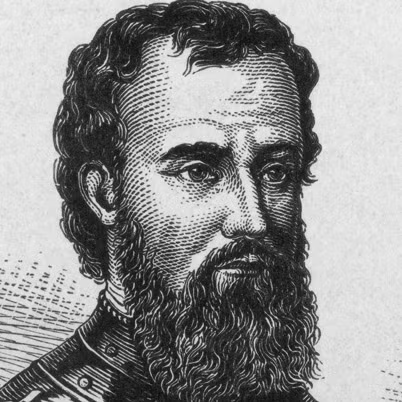
Table of Contents
Who Was Giovanni da Verrazzano?
Giovanni da Verrazzano, an Italian explorer born around 1485 near Val di Greve, Italy, began his maritime career in 1506 or 1507. By the 1520s, he was commissioned by King Francis I of France to explore the East Coast of North America in search of a route to the Pacific Ocean. Verrazzano’s most notable achievement came during this expedition when he discovered New York Harbor in March 1524, landing near Cape Fear, North Carolina, before heading north. Today, the Verrazzano-Narrows Bridge, which spans the harbor, bears his name. His exploratory efforts contributed significantly to France’s understanding of the New World.
Verrazzano embarked on two more voyages to the Americas, but his second voyage in 1528 ended tragically when he was killed by natives in the Caribbean, likely on the island of Guadeloupe.
Early Life and Introduction to Exploration
Giovanni da Verrazzano was introduced to exploration at an early age. Before embarking on his voyages to the Americas, he traveled to Egypt and Syria—regions that were difficult to access during his time. By 1507, Verrazzano had moved to France, where he connected with King Francis I and the French navy, gaining insights into France’s exploratory missions.
During the early 1500s, France had fallen behind Spain and Portugal in the race to explore the West. Encouraged by reports of riches from the New World and the potential for expanding his empire, King Francis I sought to commission expeditions to catch up with rival powers. Verrazzano proved himself a capable navigator and convinced the king that he was the right person to lead France’s efforts in the New World.
Voyages and Legacy
Between 1522 and 1523, Verrazzano prepared for his first major voyage with a fleet of four ships equipped for exploration. The flagship, Delfina, named after the king’s daughter, led the expedition. However, the journey faced significant challenges, including the loss of two ships in a storm and a battle with Spanish forces, leaving only the Delfina to continue the mission.
Verrazzano’s goal was to find a passage to the Pacific Ocean by sailing along the northern coast of North America. After 50 days at sea, his crew made landfall near Cape Fear, North Carolina, before navigating south toward Florida and then turning north. By April 17, 1524, Verrazzano had entered what is now New York Harbor and briefly explored the southern tip of Manhattan. He continued his journey northward, eventually reaching Newport, Rhode Island, where he stayed for two weeks, interacting with the local population before returning to France in July 1524.
Verrazzano’s explorations, particularly his discovery of New York Harbor, left a lasting impact on France’s ambitions in the New World. His legacy is honored through various monuments, including the Verrazzano-Narrows Bridge in New York, which commemorates his contributions to exploration.
Accomplishments
Giovanni da Verrazzano made significant contributions to the field of cartography by expanding the knowledge of the geography of the East Coast of North America. His explorations provided invaluable information to mapmakers of the time. In recognition of his impact, several landmarks bear his name today, including the Verrazzano-Narrows Bridge, which connects Brooklyn and Staten Island in New York, and the Jamestown Verrazzano Bridge in Rhode Island.
Death
In March 1528, Verrazzano embarked on his final voyage, once again seeking a passage to India. This followed a previous unsuccessful attempt via South America. Accompanied by his brother, Girolamo, the expedition sailed along the coast of Florida and into the Caribbean Sea. Tragically, Verrazzano and a small group of crew members landed on an island south of Jamaica, where they were attacked by cannibalistic natives. Verrazzano and his men were killed, and their deaths were witnessed by Girolamo and the remaining crew, who were powerless to intervene.
